I shot 200 photos with the Google Pixel 8a vs Samsung Galaxy A35 — here’s the best budget camera phone
Can Samsung's midrange model topple the king of low-cost camera phones?

Just because you want to pay less for your phone doesn't mean you should compromise on the quality of the photos that phone captures. Google has proven that time and again with its A Series midrange devices, with the Pixel 8a the latest release to make the case that it's the best camera phone for less than $500. But Samsung's Galaxy A35 is a midrange model that has designs on supplanting that Pixel as the bargain hunter's choice.
I've been testing the Galaxy A35 for an upcoming review. (You can read the Galaxy A35 hands-on my colleague John Velasco did for some first impressions of that phone.) And part of that testing has included taking photos — a lot of photos — alongside a Pixel 8a and comparing the results to which camera setup is better.
The Galaxy A35 has its work cut out for it if it wants to beat out the Pixel's cameras. In our Pixel 8a review, we singled out the camera performance for praise, despite the fact that Google made few changes from the Pixel 7a's hardware. That's a testimony to how good Google's computational photography features are and how they work behind the scenes to optimize the images you've captured.
Which camera phone should you turn to if you don't want to spend big bucks on a flagship phone? Our Google Pixel 8a vs. Samsung Galaxy A35 200-photo face-off can get to the bottom of that by looking at dozens of photos shot under different conditions.
Google Pixel 8a vs. Samsung Galaxy A35 camera specs

Before we dive into the photo comparisons, let's look at the camera setups we're comparing. Both the Pixel 8a and Galaxy A35 feature two rear cameras that merit most of the attention, though the Samsung phone throws in an extra sensor to try and gain an edge on the Pixel.
| Row 0 - Cell 0 | Google Pixel 8a | Samsung Galaxy A35 |
| Main rear camera | 64MP (f/1.9, 1/1.73") | 50MP (f/1.8, 1/1.96") |
| Ultrawide camera | 13MP (f/2.2, 120-degree FOV) | 8MP (f/2.2, 123-degree FOV) |
| Macro sensor | None | 5MP (f/2.4) |
| Front camera | 13MP (f/2.2) | 13MP (f/2.2) |
Like its predecessor, the Pixel 8a features a 64MP main camera and a 13MP ultrawide camera. The front camera has the same 13MP rating as the Pixel 7a, though Google increased the field of view to a 96.5 degrees instead of 95 degrees. If you can spot the difference, you've got sharper eyes than me.
Those same camera types adorn the Galaxy A35, though the megapixel ratings are different on Samsung's phone. The Galaxy A35 offers a 50MP main lens and an 8MP ultrawide shooter. There's also a 5MP macro sensor, giving Samsung's phone one edge over the Pixel 8a, which offers no macro features. Up front, a 13MP camera handles selfies.
Get instant access to breaking news, the hottest reviews, great deals and helpful tips.
In the U.S., the Galaxy A35 replaces the Galaxy A54, which was a slightly more expensive phone that had a slightly better ultrawide camera, at least on paper. I had been impressed with the performance of that older phone's cameras when I reviewed the Galaxy A54 last year, so I'm interested to see if the less expensive follow-up cuts any corners.
Google Pixel 8a vs Samsung Galaxy A35: Outdoor shots
I tested out the cameras on the Pixel 8a and Galaxy A35 on multiple days under different lighting conditions — sometimes it was bright and sunny, other times cloudy, with more than a few photos captured just before dusk. I took the above photo of a local mural in early evening, as a matter of fact, and it really reflects the different approaches taken by both phones to dealing with ambient lighting.
The Pixel 8a comes the closest to reflecting the actual quality of light when I took the shot, but that has the affect of darkening the overall photo. Check out the frog on the right side of the mural and how he almost blends into the background. The outlines of the frog are much more distinctive in the Galaxy A35 shot, and the colors are brighter as well. Samsung's phone has the better overall photo, though I do appreciate the richer color tones on some of those mushrooms in the Pixel image.
As you can see from the photo gallery below, the Galaxy A35 does tend to go for lighter shades in its pictures, pumping up the color to compensate for any unfavorable lighting. Some times that works, like in the mural photo at the top of this section or in the photo of a ferry boat where the boat's green stripe really stands out in the Galaxy S35 shot. But sometimes, the emphasis on color can veer toward hyper-realistic — in a photo of cable car, the Galaxy A35 tries to lighten the trees in the background to the point where they're bathed in an angelic light. The Pixel 8a shot is much more realistic and better composed.






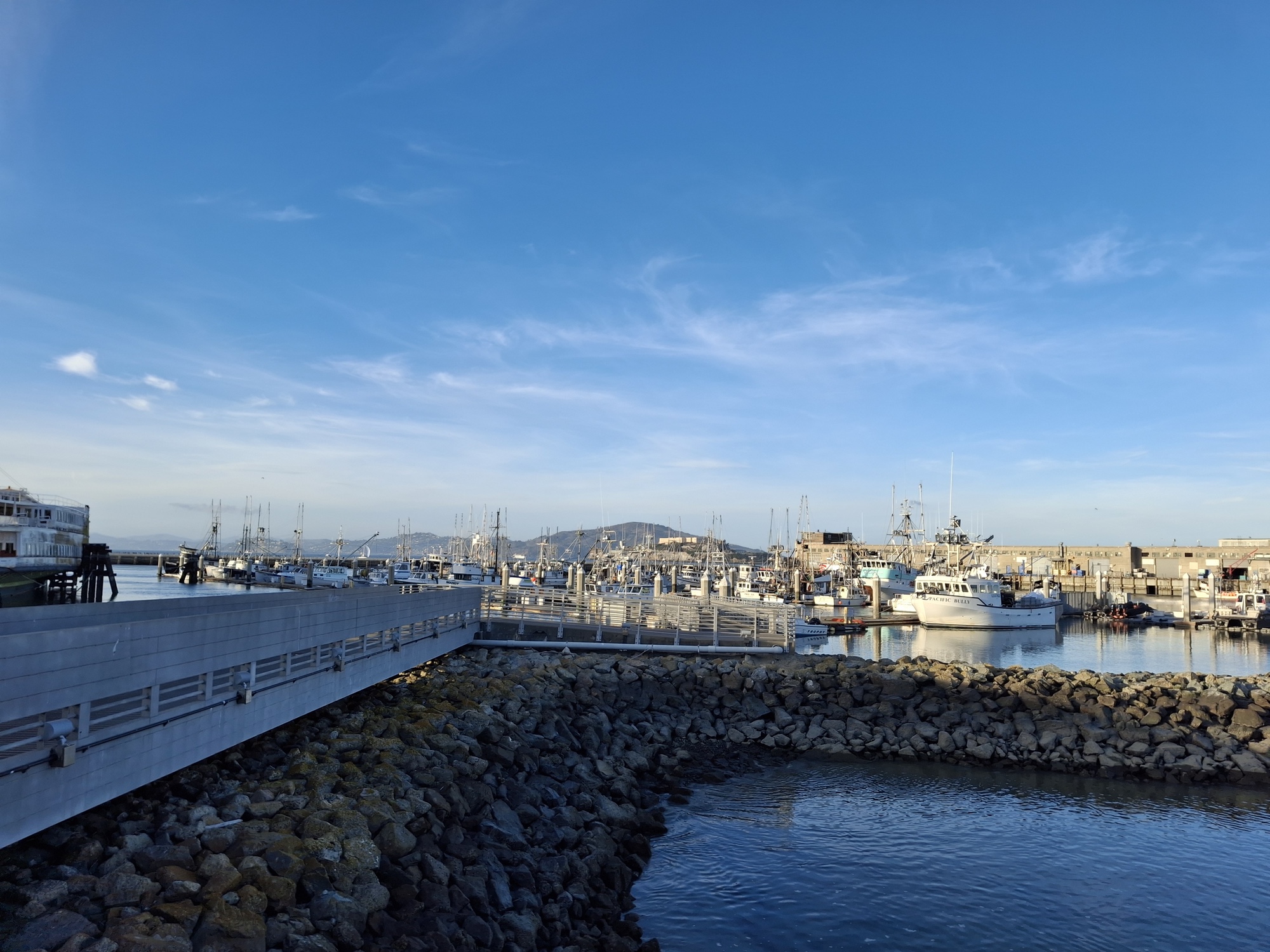








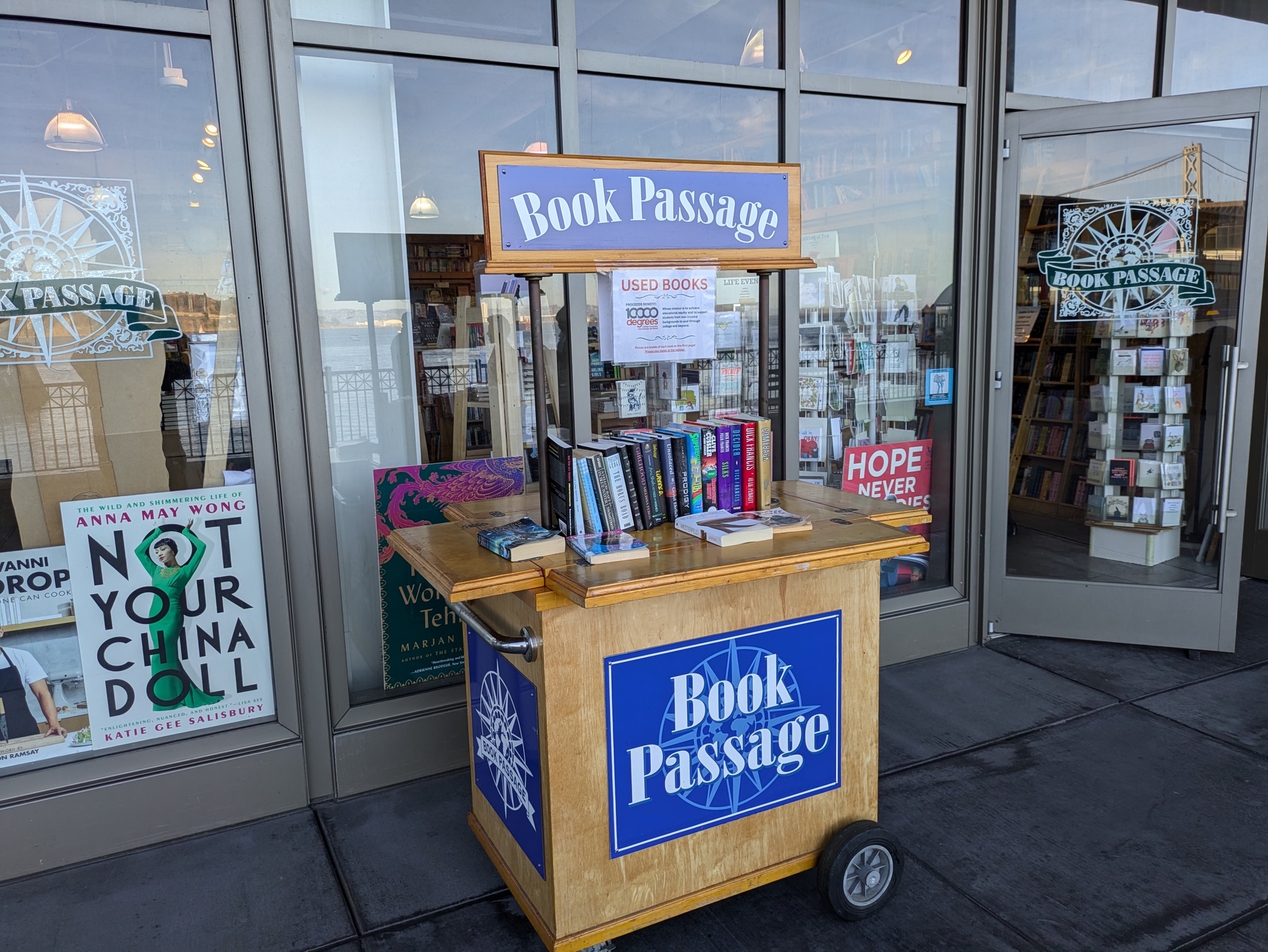


I think the Piel 8a strikes the better balance in colors, as you can see in the shots of a breakfast sandwich on a picnic table or of a harbor near Fisherman's Wharf in San Francisco, but in many of these outdoors shots, the phones are evenly matched. The Galaxy A35's lighter hand with shadows does work to its advantage in some cases, as it revels more detail in the face of the Gandhi statue.
Winner: Google Pixel 8a
Google Pixel 8a vs Samsung Galaxy A35: Indoor shots
Lighting can vary wildly when you're indoors, but of the two phones I've tested here, the Pixel 8a is better positioned to deal with the vagaries of harsh or inconsistent lighting. The Galaxy A35's desire to make colors pop turns the focus in the above photo of a bowl of pho to the chilli pepper in the center of the bowl. The Pixel 8a levels out the lighting, and as a result, the broth in the pho takes center stage, with a nice rich color. I know which bowl of pho I'd rather eat based on the two images.
This happened again and again when I took photos indoors with the Galaxy A35 and Pixel 8a. A black-and-white vase shot against a white background looks balanced in the Pixel 8a shot, but the lighting becomes overly harsh in the Galaxy A35's image. Shooting the lobby of a Fisherman's Wharf tourist trap, there's a blue tint to the Galaxy A35 that distorts the overall tone of the picture; compare that to the Pixel 8a shot where the color of that 49ers jersey on the horrible statue is a lot more true-to-life.





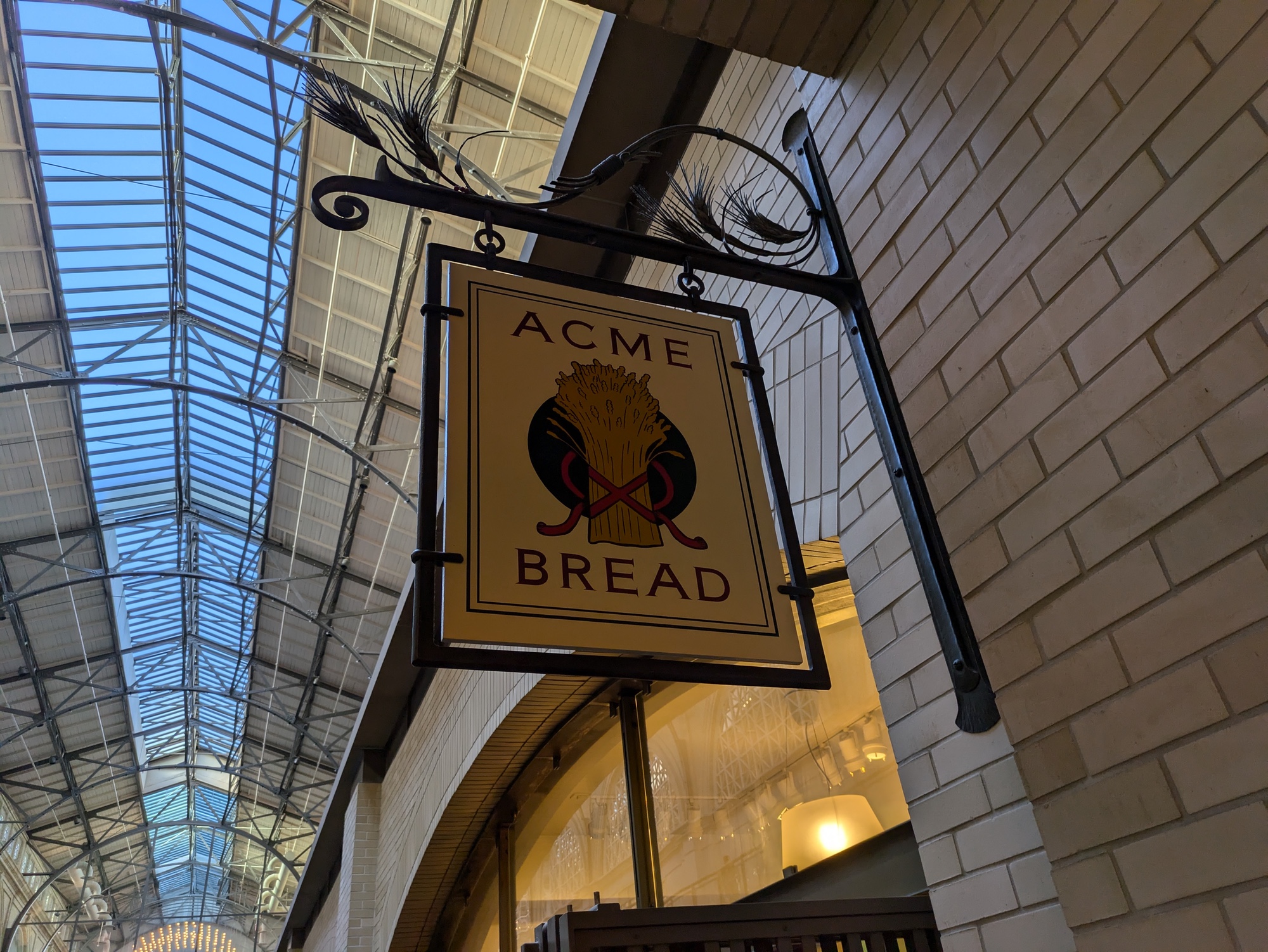

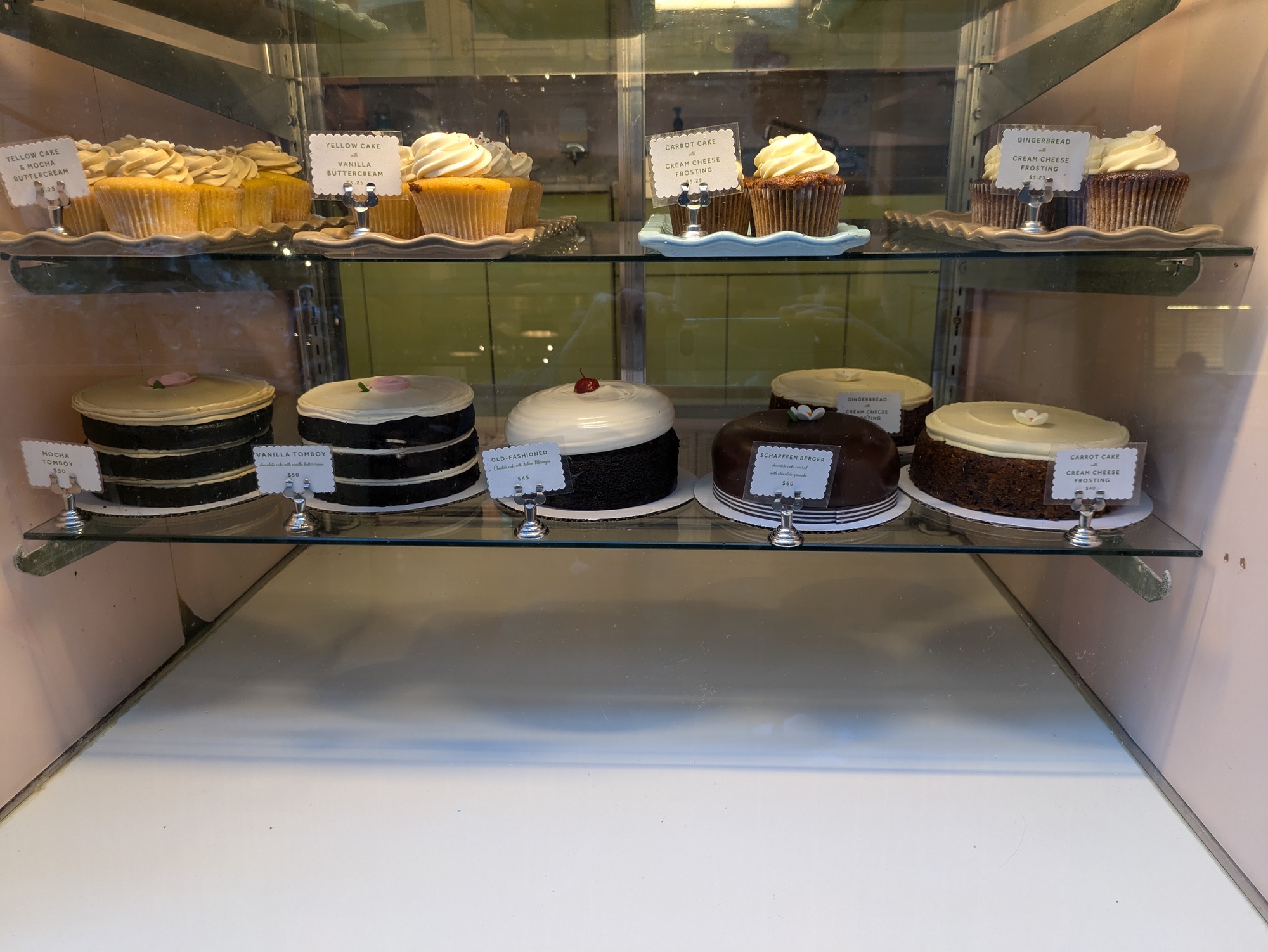












The Galaxy A35 isn't totally hopeless indoors. Sometimes, it got the better of the Pixel 8a in dealing with lighting, like with the Acme Bread sign and the display case full of cakes. (That these photos were shot in the same indoor marketplace may explain why the Galaxy A35 behaved more consistently.) But I think the Pixel 8a proves more dependable indoors, as it's able to balance both light and color to create generally pleasing results.
Winner: Google Pixel 8a
Google Pixel 8a vs Samsung Galaxy A35: Dynamic range
Looking at dynamic range really gives the Pixel 8a a chance to flex its muscle. Google's camera phone does a terrific job balance light and shadow, highlighting colors in a realistic way. It's a challenge the Galaxy A35 doesn't seem to want to contest.
Take the above photo of a ferris wheel that I shot during the Golden Hour — that period just before sunset when the light is softer. The Pixel 8a photo reflects that both in the tone of the sky and the light bouncing off the ferris wheel. The Galaxy A35 looks like its trying to remove any indications that the sun is getting ready to set, and you get a flat, less dynamic image as a result.
That happened consistently any time I tried taking photos with these two phone where any bit of shadow was present. A statue on the University of California, Berkeley, campus looks all right in the Galaxy A35 photo, but the Pixel 8a doesn't darken the statue so you can still see details, despite the grove of nearby trees affecting the ambient lighting. In a photo on the shore of the San Francisco Bay with the Golden Gate Bridge poking out of the far background, a bit of lens flare crept into the Galaxy A35 shot that's not present in the Pixel 8a photo.
That same problem crops up in a photo of the Ferry Building captured by the Galaxy A35, which also adds a blue tint to the scene. To be fair, there's lens flare in the Pixel 8a shot, too, though the overall colors are warmer and more inviting.

One more shot inside the Ferry Building also helps tell the tale of the Pixel 8a's superior dynamic range. A passerby in the foreground of the shot's face is completely visible in the Piel 8a photo but darkened by shadow in the A35 shot. You're just getting more balanced photos with the Pixel 8a.
Winner: Google Pixel 8a














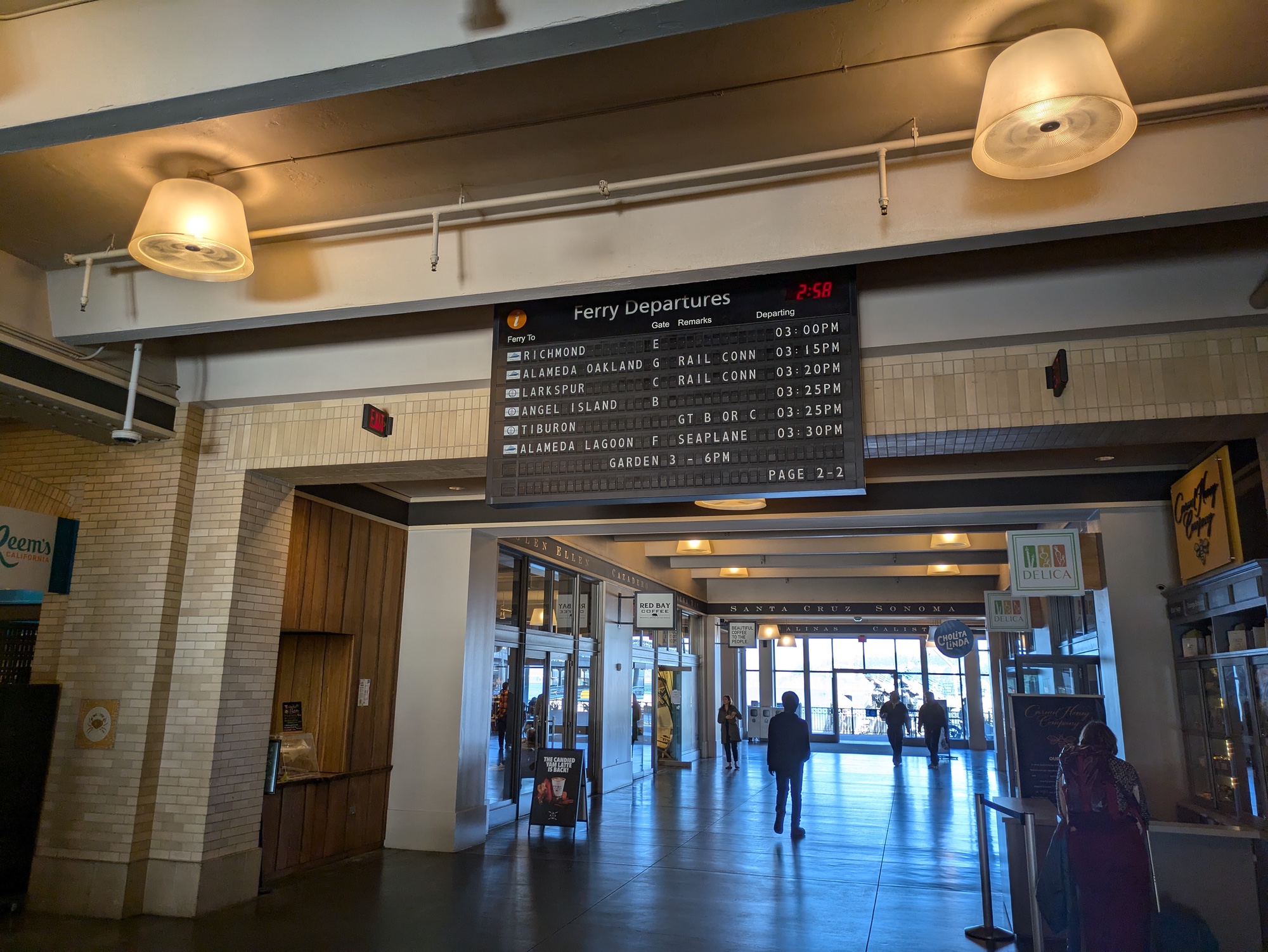


Google Pixel 8a vs Samsung Galaxy A35: Color reproduction
Who wins the color category depends in large part whether you like bright, colorful photos or more true-to-life images. While the Galaxy A35 doesn't go overboard with boosting color, its colors tend to pop more than the muted, realistic hues you get from Pixel 8a photos.
More often than not, it works like in this picture of a Blue Hawaii cocktail next to a tiki mug. The brick color of the tiki isn't as bright as the Galaxy A35 makes it out to be, but Samsung's tendency to pump up the color gives you a brighter cherry, and a swirl of some of the juice the the bottom of the glass. The Pixel 8a photo, while accurate, lacks some pizzaz.




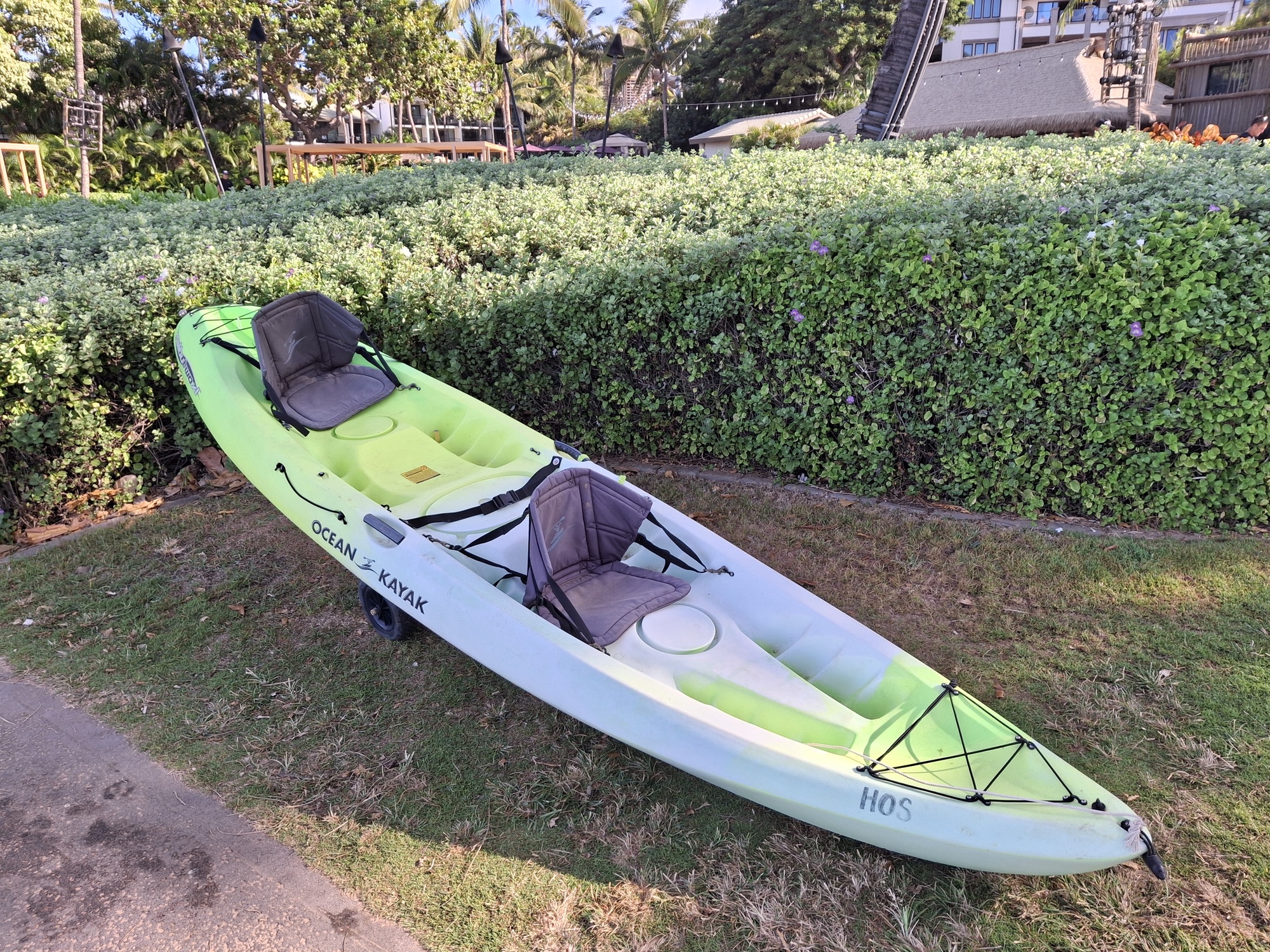




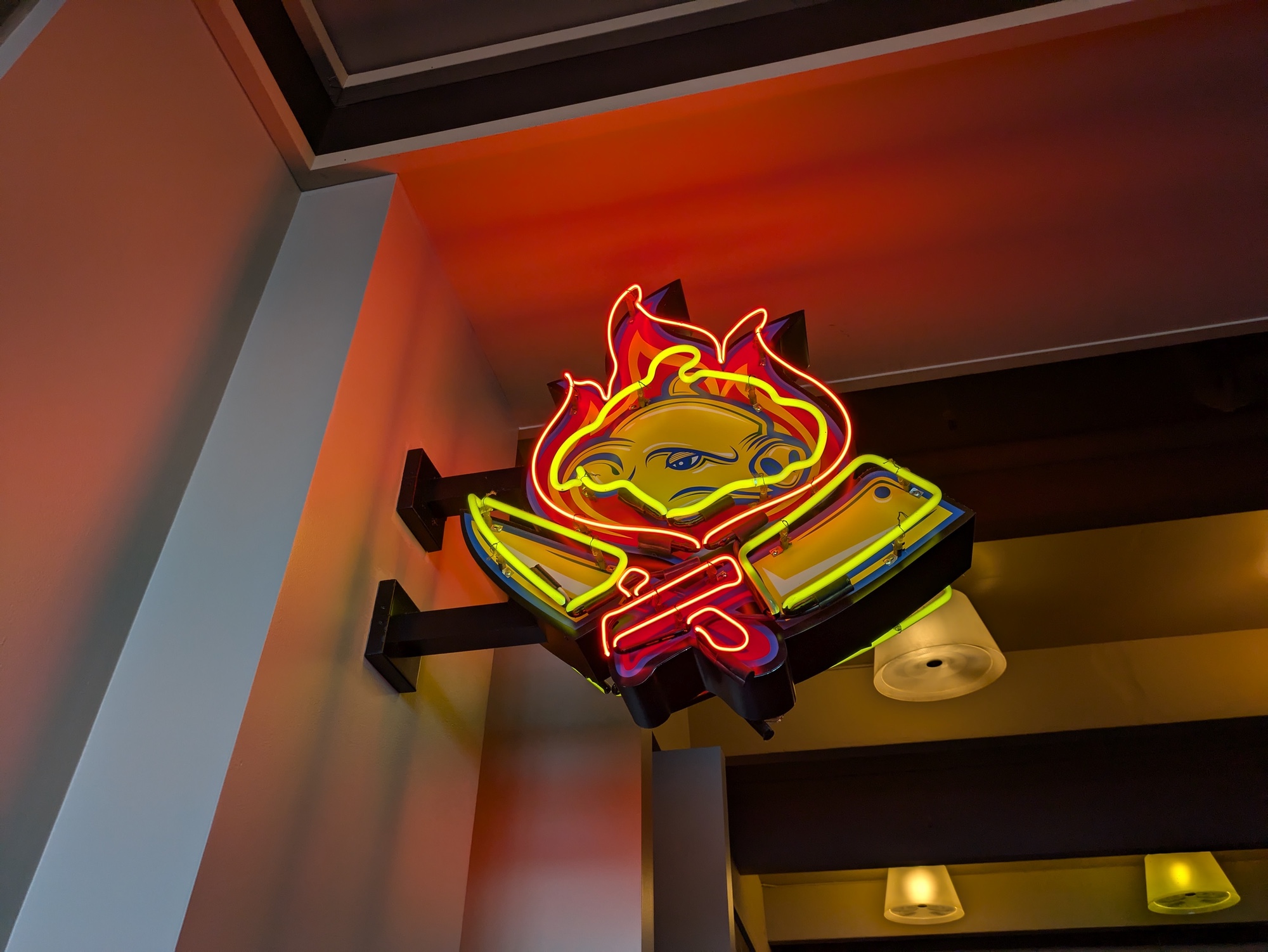

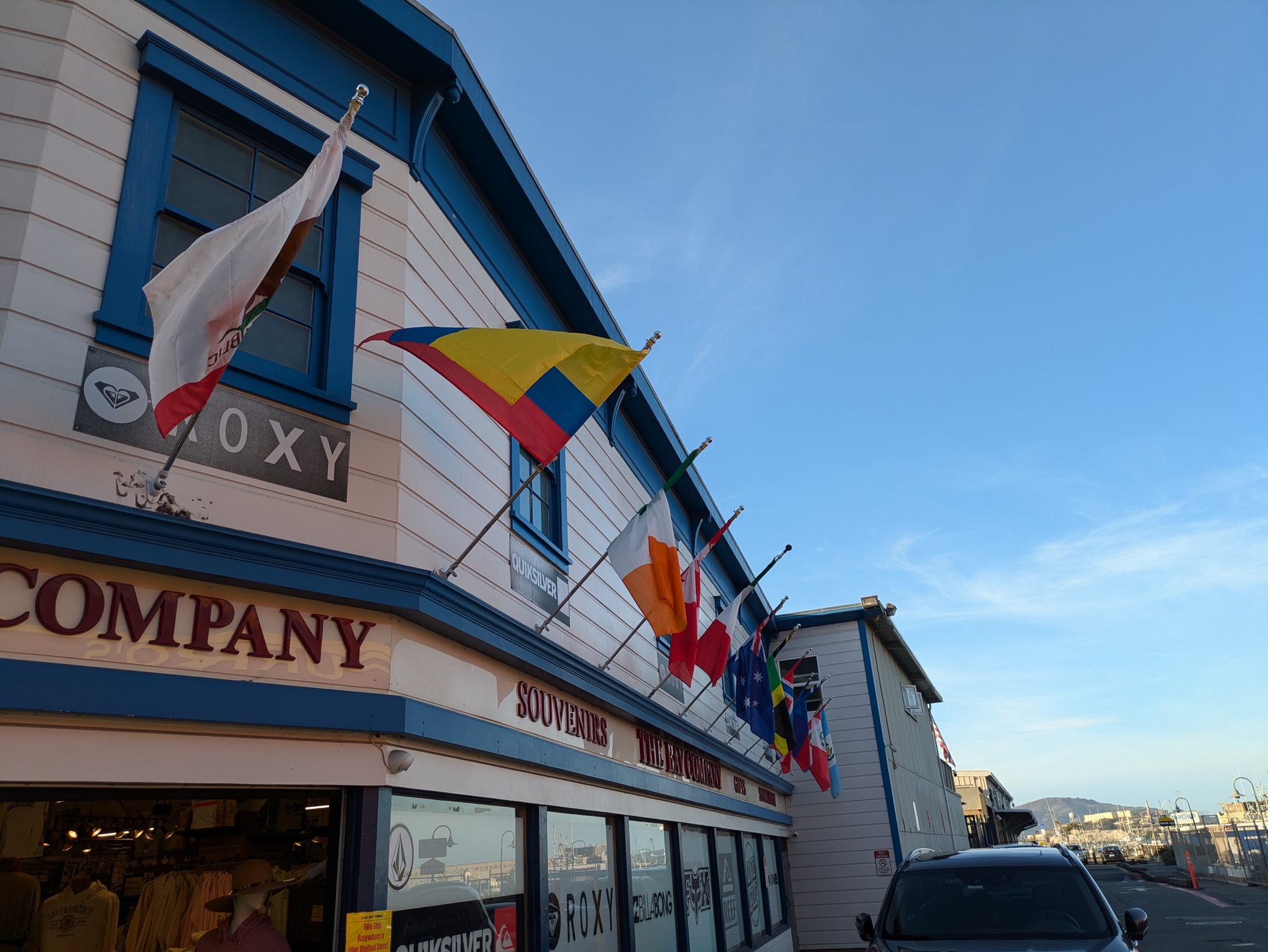
You see other instances where the Galaxy A35's insistence that color is king pays dividends like the balance of blue and brown from the National Park service sign and the brighter blue of the water around the Bay Bridge. The Pixel 8a isn't overmatched here — I think its reproduction of the kayak benefits from a richer green, and I think it handles the leaves on the tree in front of that giant mural with greater aplomb. But the Galaxy A35 certainly can churn out some eye-catching and pleasing colors under the right circumstances.
Winner: Samsung Galaxy A35
Google Pixel 8a vs Samsung Galaxy A35: Macro shots


The Pixel 8a is at a disadvantage here. It has no dedicated Marco mode like the Galaxy A35 offers. While Samsung's phone uses a 5MP sensor to get good and close to objects you want to photograph, with the Pixel 8a, you're moving the lens as close as possible and hoping that focus kicks in.
An apple growing in my back yard turned out well enough when shot by the Pixel 8a, though it took a couple attempts to hold the camera phone steady enough to get a shot that didn't blur. The process much easier by turning to Macro mode on the Galaxy A35, and the results turn out much more consistent.
I don't know that anybody is making a decision about camera phones based on macro photography, but if you are, the Galaxy A35 should be your choice.
Winnter: Samsung Galaxy A35
The Pixel 8a finds itself at a disadvantage here — it doesn't include a macro mode like the Galaxy A35 oes. Whereas Samsung's phone can turn to a 5MP sensor to get up close and personal with whatever you're filming, you have to get the Pixel 8a as close to the subject as possible and hope that everything stays in focus when you tap the shutter button.
That said, this close-up of an apple growing in my backyard that I shot with the Pixel 8a's main lens is pretty detailed, though it took several tries to get a shot this focused. I definitely feel like I have more control when taking macro photos with the Galaxy A35, which produced something just as detailed but with less fuss.
I'm not sure how many people are deciding on camera phones based on macro photography. But if those ranks include you, the Galaxy A35 takes this category, even if it's by default.
Winner: Samsung Galaxy A35
Google Pixel 8a vs Samsung Galaxy A35: Ultrawide shots
When we turn to the ultrawide cameras on the Galaxy A35 and Pixel 8a, it looks like we're almost living in opposite world. It's Samsung's phone that produces the darker colors at this football game, while the Pixel 8a puts the emphasis on brightness. But that cool, blue tone that's popped up in other A35 photos is very much on display here, and it's to detrimental of the shot's quality. The game I'm photographing was played on a sunny, if somewhat shadow-filled afternoon, and the Pixel 8a shot better reflects that.














As for other ultrawide photos, they pretty much revealed many of the same strengths and weaknesses we've seen so far, especially in the dynamic range department. An ultrawide shot of Ghiradelli Square in San Francisco features warm tones in the Pixel 8a photo that better capture the moment. While I appreciate how deeply blue the bay is in the Bay Bridge ultrawide shot taken by the Galaxy A35, it borders on the oversaturate, while the Pixel 8a offers a more natural tone. And our ferris wheel photo shot in ultrawide has the same issues as before, with A35's version looking especially washed out.
Winner: Google Pixel 8a
Google Pixel 8a vs Samsung Galaxy A35:: Zoom shots
You won't find a dedicated telephoto camera on either the Pixel 8a or Galaxy A35, as that feature is generally restricted to more expensive models. So any zoom shot you try with either phone will rely on a digital zoom, which can introduce noise into the final image as you move in closer on your subject.
The Pixel 8a may have an advantage here, thanks to Google's Digital Res Zoom feature, where computational photography cleans up a zoomed-in image somewhat. Indeed, we see that in action in the 4x zoom in on Sather Tower up above. The Pixel 8a's shot stays in focus more, and when you crop in, you can still make out details on the clock and see the brick lines on the surface of the building. That detail is lost in the Galaxy A35 image.
Looking at the gallery below, the Galaxy A35 fares better the less you zoom in. On 2x shots like the one of the ferry boat, Samsung's phone actually produces a better, more colorful shot, while the A45 holds its own against the Pixel when I zoom in on the Gandhi statue.


















The Pixel 8a's zoom tops out at 8x while the Galaxy A35 pushes things all the way to 10x. still, I wouldn't count on getting clear shots from the Samsung phone at that distance. While the art deco facade of a building looks nice in the Galaxy A35's 8x zoom, photos of the cannon on the hills outside Cal's football stadium and of Alcatraz Island fall short of what the Pixel 8a achieves. The Pixel 8a even maintains different color tones on the Fisherman's Grotto sign at 8x, while the A35 shot becomes fairly murky at that distance.
Winner: Google Pixel 8a
Google Pixel 8a vs Samsung Galaxy A35: Portrait mode
It's really impressive what midrange phones can do with portrait mode these days, and the Galaxy A35 offers a striking example. My friend Jason is neatly separated from the crowd in the background, with a stylish blur helping him stand out. It's not a perfect image — the blur erases a bit of his glasses — check on the right edge — but the Pixel 8a also struggled with Jason's glasses. And the Pixel 8a also indulges in the kind of over-smoothing to Jason's face that Google phones are notorious for.
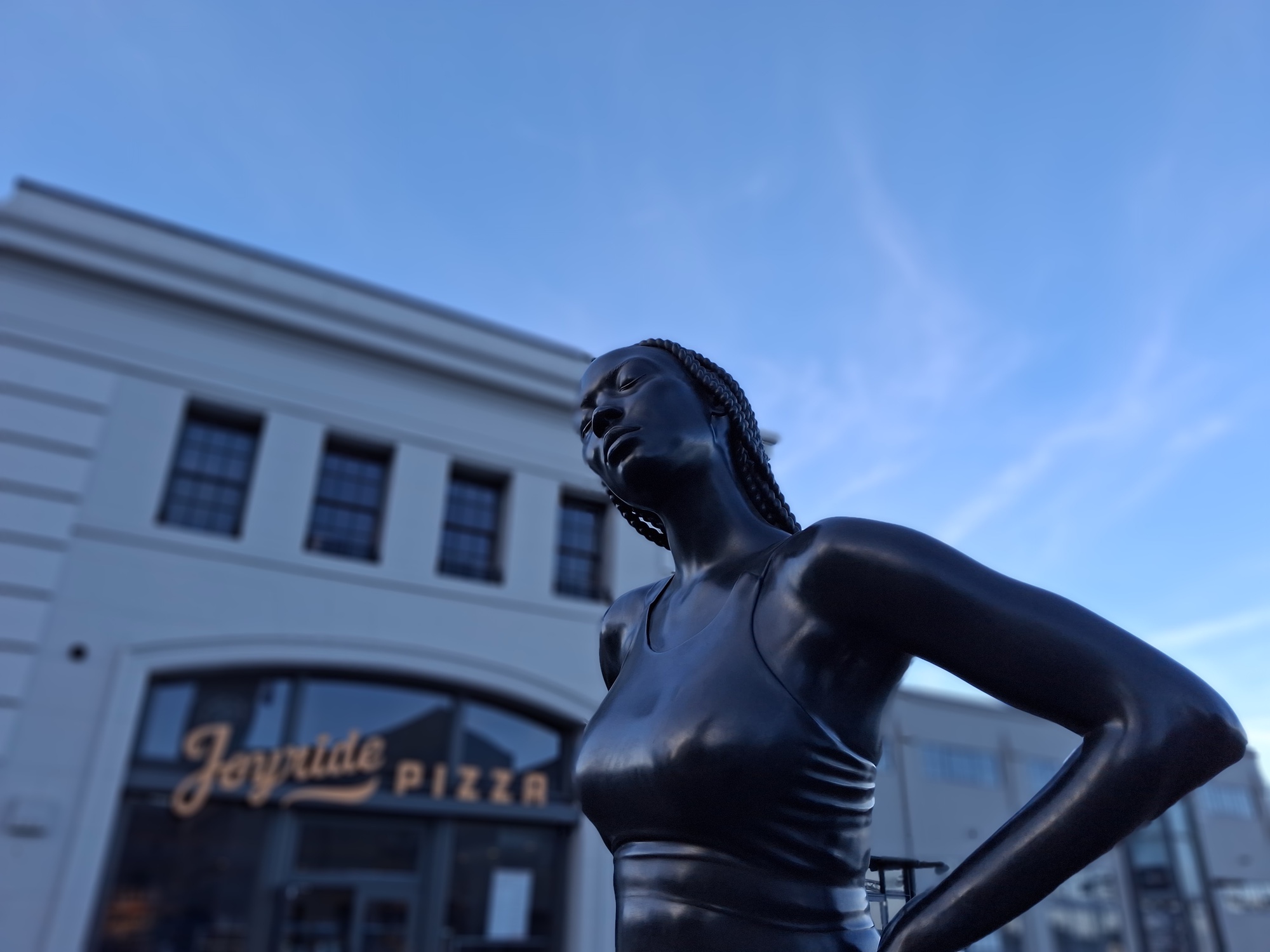







The Pixel 8a handles some portraits better than the Galaxy A35. It got the tone of a statue I shot in portrait mode more accurate than the overly cool A35 image, and a close-up of my cat curled up asleep gets caught in a overly aggressive blur by Samsung's phone. That said, I prefer the portrait shot of my daughter from the Galaxy A35 — she stands out better than in the Pixel shot — and the A35 redeems itself with a second cat portrait, even if it struggles with the night-time lighting.
Winner: Samsung Galaxy A35
Google Pixel 8a vs Samsung Galaxy A35:: Night shots
Whether it's low lighting or no lighting, there's not much of a contest between the Pixel 8a and Galaxy A35 as to which phone takes the better photos. The low-light features on Google's phone tease out color and details that get lost in the darkness of the A35 shots.
We can see that in the trio of stuffed animals I've placed on a bench that's lit by only a little ambient lighting from the right. In the Galaxy A35 photo, the leopard disappears almost entirely into the darkness, and you can only make out Kermit's face. What's more, the flowers I placed on the bench are an indistinct, oversaturated mass. The Pixel 8a teases out a lot more details — you can see not just the entire bodies of the stuffed animals, but individual petals on the flowers as well.
Even when the lights aren't completely out, the A35 is out of its depth compared to the Pixel 8a. A Hawaiian sunset features some nice colors in the sky in both shots, but only the Pixel 8a also makes the shoreline visible. A passerby admiring the sunset is completely in the dark in the A35 shot, for instance.

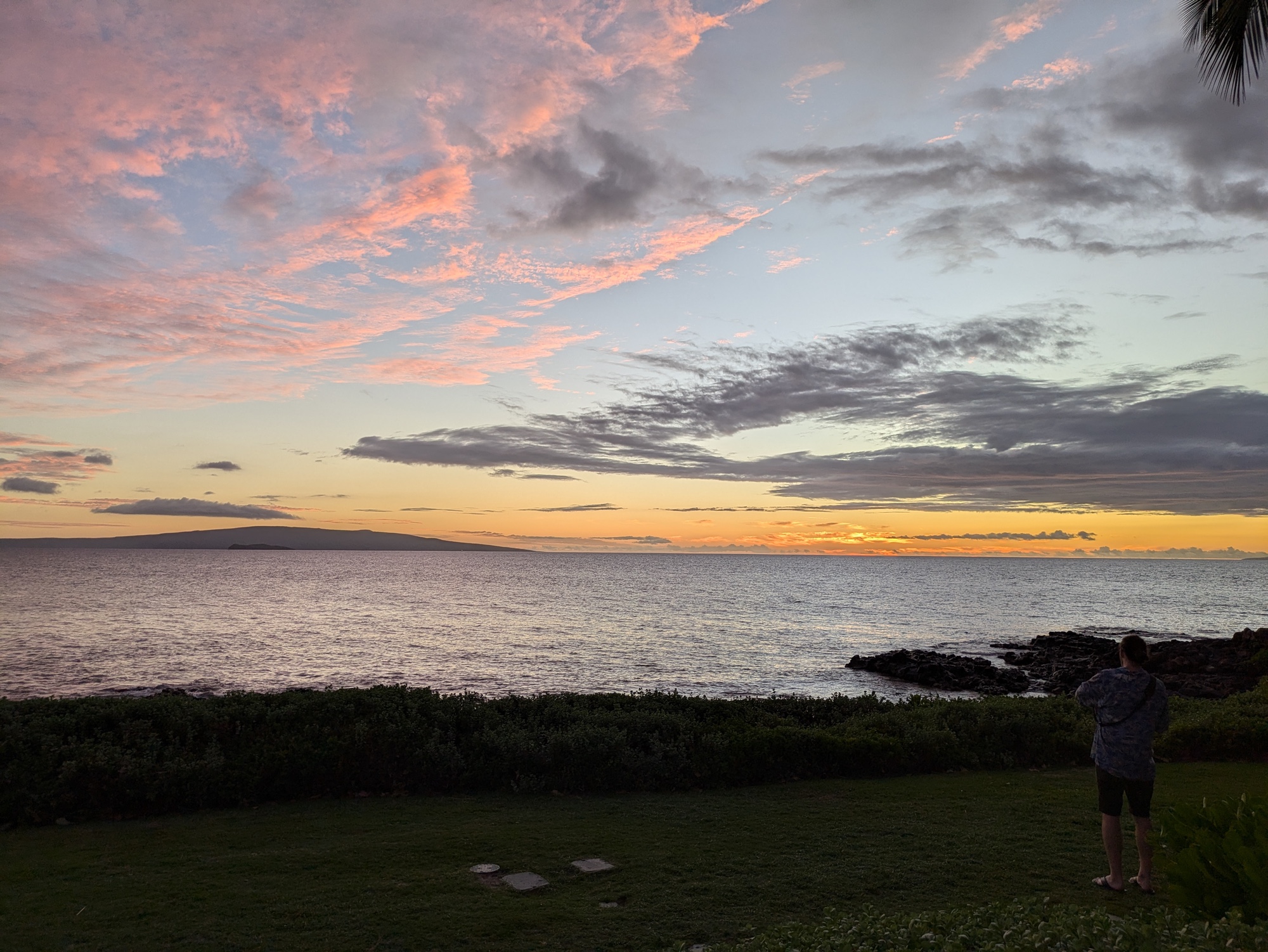









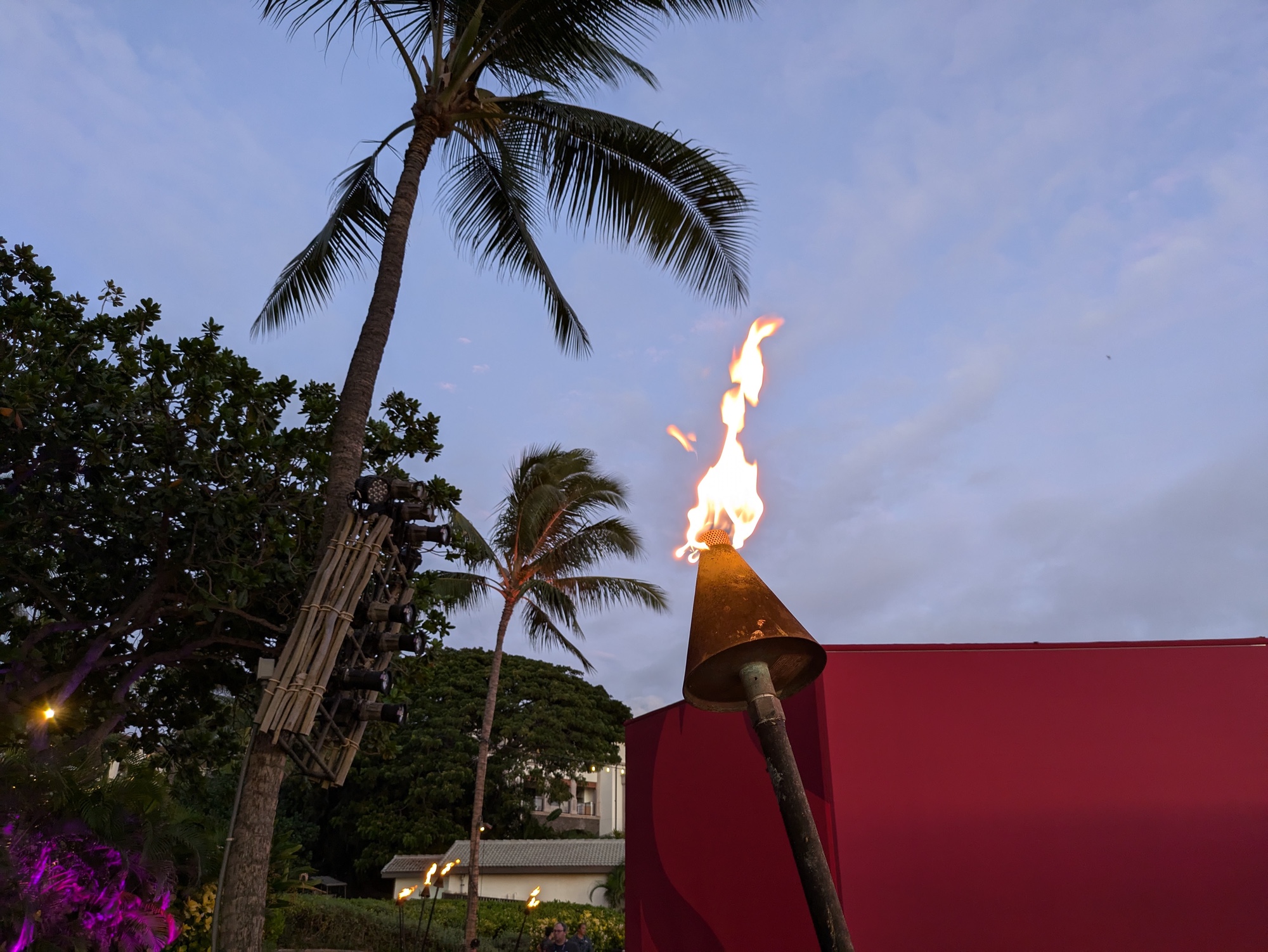
In other photo comparisons, things fall even more decisively in the Pixel 8a's favor. Google's phone manages to keep the lights of a vivid theater marquee in focus, and a pumpkin retains its bright orange color. A shot of a flower in a front-yard garden is blurry and unfocused when shot by the Galaxy A35, but more detailed in the Pixel 8a photo.
Winner: Google Pixel 8a
Google Pixel 8a vs Samsung Galaxy A35:: Selfies
Neither selfie cam on the Pixel 8a or Galaxy A35 really distinguishes itself, resulting in one of our closest contests. The above shot of me at a Cal football game is typical of the dilemma in comparing the self-portraits shot by these two cameras — my face looks more natural in the Galaxy A35 shot, but the background is more focused and detailed in the Pixel 8a effort.
Subsequent efforts provided a similar mixed bag of results. Trying out portrait mode with the front camera in front of a brick wall, I look far too pale in the Galaxy A35 shot, which also struggles with blur around the left side of my face. I certainly look healthier in the Pixel 8a shot, though there's some noticeable over-smoothing.






A night selfie in Oakland looks unfocused in the Galaxy A35 shot, though my skin tone is better than it is in the Pixel 8a shot. A group selfie with a Jelly Belly mascot has too many shadows in the Pixel 8a's effort, but excessive glare in the Galaxy A35 effort. And on it goes.
It's a good thing I hate appearing in photos — I have too little soul to begin with to let cameras steal it — because I'm not thrilled with the results from either phone. I'd give the edge to the Galaxy A35 for at least getting my face right in a majority of the pictures, but it's a very unenthusiastic win.
Winner: Samsung Galaxy A35
Google Pixel 8a vs Samsung Galaxy A35:: Panoramas






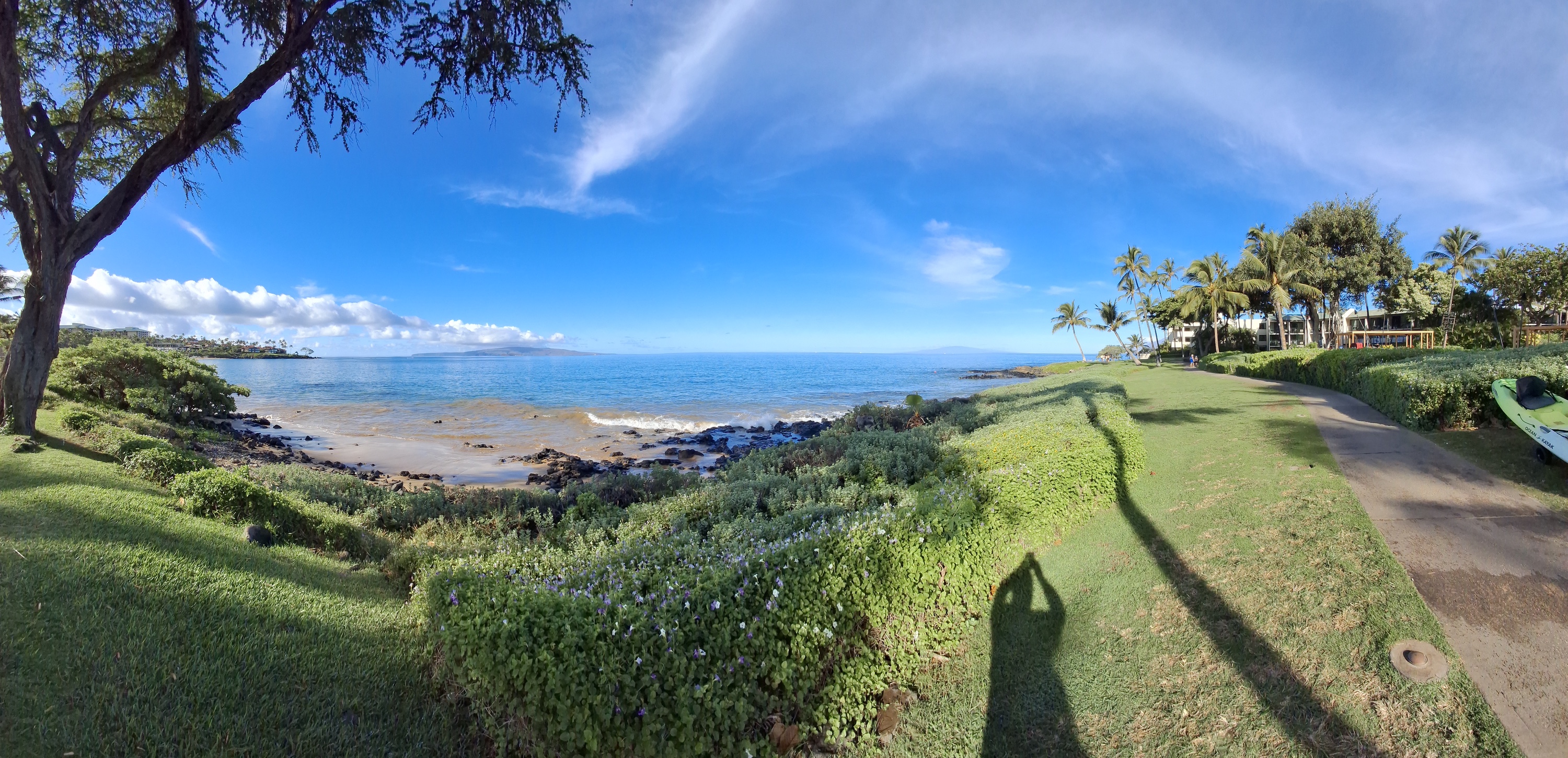
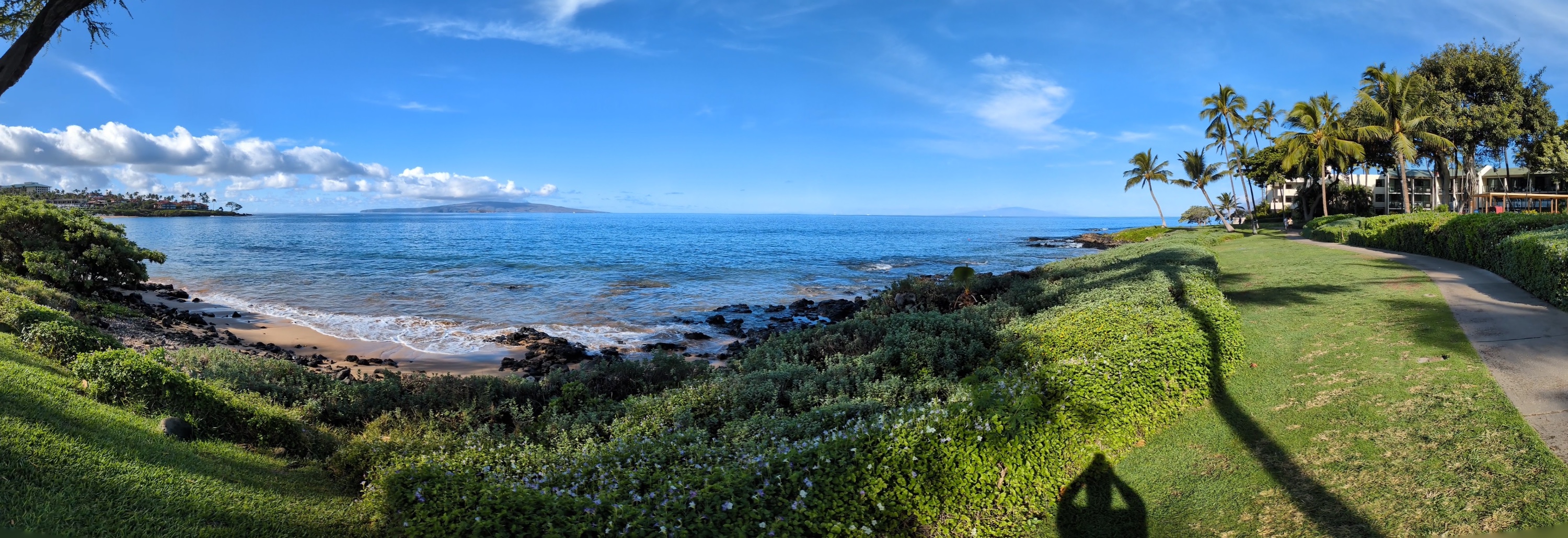


The Galaxy A35 panorama feature just isn't up to snuff. Every attempt at a panorama — from shorelines to stadiums — ended with a strange bend or severe right angle in the center of the picture. In contrast, the Pixel 8a's panoramas looked more seamless with less distortion.
The panorama featuring the Bay Bridge and Yerba Buena Island illustrates that. The Pixel 8a's attempt has some odd angles with the ferry dock on the left jutting into the shot in an unnatural way. But it's not nearly as pronounced as the acute angle in the Galaxy A35 picture, which also makes the bridge seem even farther away. Perhaps, the issue is operator error, but you'll notice the Pixel 8a panoramas don't exhibit the same behavior.
Colors are also off in the Galaxy A35's panoramas, too, whether it's the oversaturated blue bay in that Bay Bridge shot or the overly dark Hawaiian sunset. The Pixel 8a manages to reproduce some of the purples and pinks in the sky, and it's a much higher-quality image.
Winner: Google Pixel 8a
Google Pixel 8a vs Samsung Galaxy A35: Videos
There's not much separating the video capture capabilities of the Pixel 8a and the Galaxy A35. Footage of an inbound BART train looks smooth enough when shot by the Pixel 8a, despite some glare from the headlights of the train. There's some motion blur as the train goes by, though the Pixel 8a quickly recovers.
You could say nearly the same thing about the Galaxy A35's footage, though. To my eye, it takes the camera a fraction of a second longer to refocus on the train as it passes, but I wouldn't say one phone has distinguished itself over the other with this clip.
The Pixel 8a's microphones did pick up a lot of wind when I filmed the water of the San Francisco Bay lapping against the shoreline — so did the Galaxy A35 as you'll soon hear — but I was pleased that the footage remained relatively steady as I panned right and left.
I would argue that the Galaxy A35 loses a little focus as I pan back from right to left. I wouldn't argue that it's a major issue, though I do think the Pixel 8a handled this particular clip better.
That said, there's not enough difference between my experience with the video features to recommend one phone over the other. On the quality of footage along, I'd say these two phones are evenly matched.
Winner: Draw
Google Pixel 8a vs Samsung Galaxy A35: Verdict
The Galaxy A35 proves to be a competent camera in my testing — certainly delivering what you'd expect from a sub-$400 phone. But it really can't compete with the Pixel 8a when it comes to camera quality. It's not that surprising a result, given that the Pixel 8a produces photos that can hold their own against much more expensive flagships, but I was impressed with how much better Google's phone is at dealing with shadows, taking low-light pictures and producing balanced shots consistently.
Of the four categories the Galaxy A35 won, one was by default (the macro photos) and another was me tossing up my hands in frustration (the selfies). I do think the Galaxy A35 produces colorful photos, and it can turn out some solid-looking portrait shots — I just wish it did so with greater regularity.
That's not a concern with the Pixel 8a, which — selfies aside — handled just about every task we threw at it. Google clearly puts a lot of thought into photo processing, not just for its flagships, but for its midrange model, too. And people who turn to the Pixel 8a for their photos will reap the benefit.
More from Tom's Guide
- Pixel 8a vs. Pixel 8 photo face-off: How the midrange model compares
- Pixel 8a vs. Pixel 7a: The biggest updates
- Best Google Pixel 8a cases
Philip Michaels is a Managing Editor at Tom's Guide. He's been covering personal technology since 1999 and was in the building when Steve Jobs showed off the iPhone for the first time. He's been evaluating smartphones since that first iPhone debuted in 2007, and he's been following phone carriers and smartphone plans since 2015. He has strong opinions about Apple, the Oakland Athletics, old movies and proper butchery techniques. Follow him at @PhilipMichaels.





